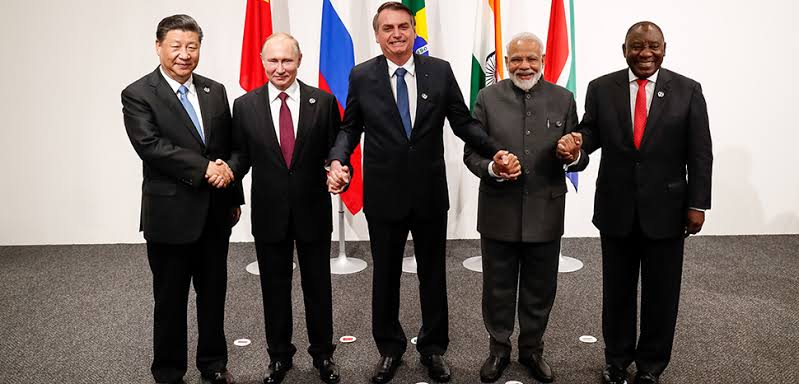BRICS is an acronym for a list of countries comprising Brazil, Russia, India, China, and South Africa. With interest from other countries including Argentina, Iran, Algeria, etc, the economic capabilities of BRICS member nations are growing into an undeniable force.
BRICS nations collectively account for 23 percent of the global economy, 40 percent of global population, 18 percent of trade in goods, $4 trillion of global forex and 25 percent of foreign investment. Also, four out of the five founding country members of BRICS, with the exclusion of South Africa, recently topped the top ten list of emerging economies around the world. On this premise, it is safe to say BRICS countries represent an economic powerhouse.
To understand the extent of the de-dollarization campaign by the BRICS nations, here is the breakdown of the power the US dollar holds.
The power of the US Dollar
The US Dollar is the most dominant currency on the planet amongst other currencies including the euro, the yen, the pound, the renminbi (RMB), the Canadian dollar, the Swiss franc, and the Australian dollar. A reserve currency is a foreign currency held by central banks or other monetary institutions in significant quantities. This currency is mostly used as a legal tender in conducting international trade and financial transactions with other countries. It eliminates the costs of settling transactions involving different currencies.
The US dollar as a reserve currency has dominated global trade since World War II. Today, the central banks of many nations hold 60 percent of their forex reserves in US dollars. They also measure the performance of their economies according to the rise or drop of its forex reserves.
The US dollar is so dominant that about half of international trades around the world are invoiced in dollars, and about half of all international loans are denominated in US dollars. Also, dollars are involved in about 90 percent of forex markets.
Global investors so rely on the power of the US dollar that during economic crises such as the global financial crisis of 2008 – 2009 and the global pandemic of 2020, many relied on the reserve currency as a safe haven currency.
BRICS de-dollarization campaign
Historically, the dominant reserve currency shifts power after many years of topping other relevant currencies. The US dollar about seven decades ago overtook the British pound to earn top spot as the world’s most dominant currency.
With just five member nations of BRICS accounting for 23 percent of the global economy, 18 percent of trade in goods, $4 trillion of global forex and 25 percent of foreign investment, analysts believe that the inclusion of more economic powerhouses can push the de-dollarization agenda by BRICS nations.
Also, the adoption of cryptocurrencies as a means of investment and trade has further reduced the over dependence on the US dollar as a store of value.
Lastly, the continued economic tension between the United States and China (a country that massively invests in the economy of African nations) could cause a shift from the dollar to other currencies.

